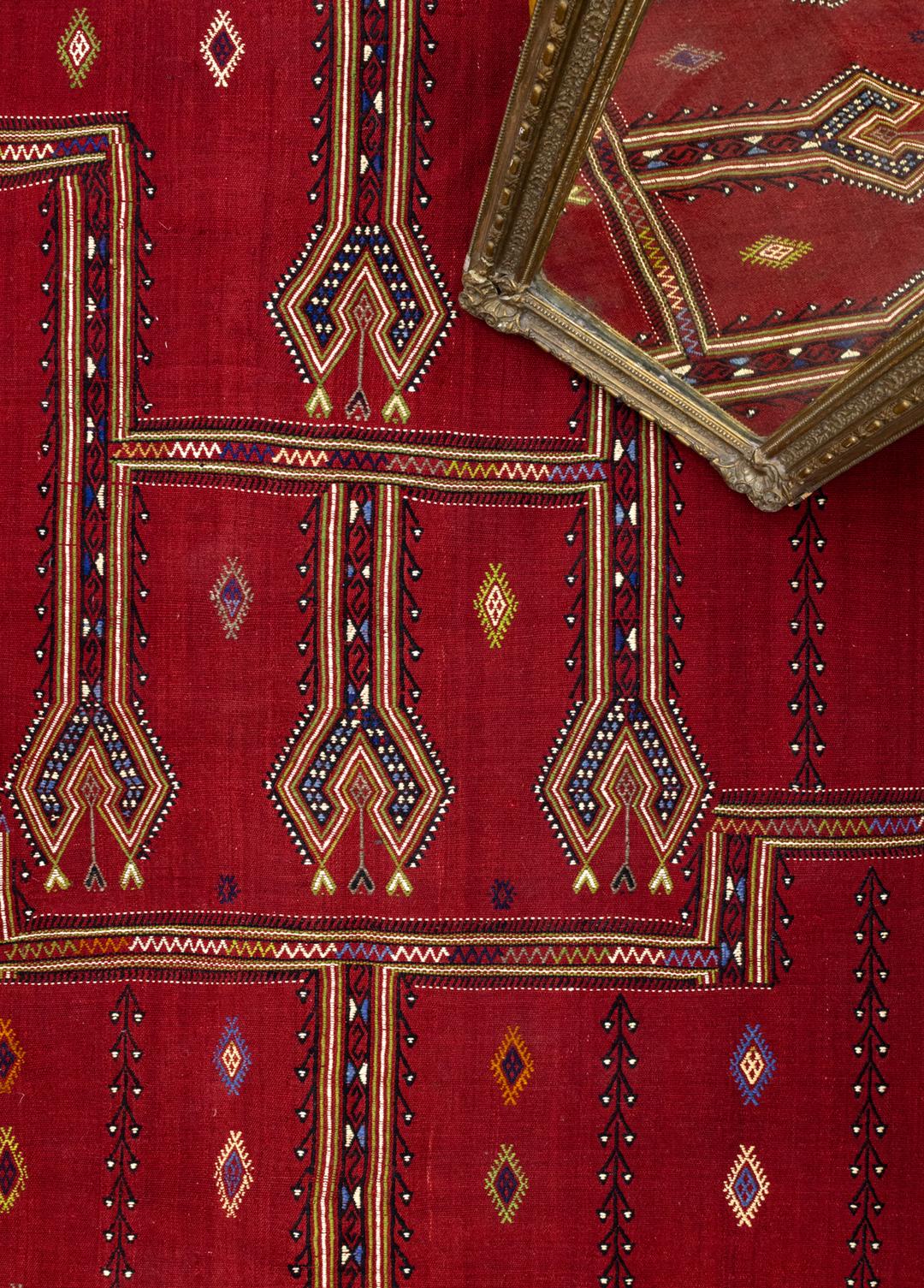Nowadays, the rule of going back to the past and making the old more valuable has also shown itself in home decoration trends. In addition to decoration trends that bring together traditional and modern lines, which we call 'Vintage', decoration trends that emphasize traditional objects have also been very popular lately.
One of the most preferred objects by those who want to create a traditional decoration style in their home is undoubtedly rugs. Rug is not only a home decoration object but also an object of cultural transmission. Rug models, which are important cultural objects in Turkish culture and the lifestyles of Turkish societies, and on which the beliefs and rituals of social life are traced through the symbols and motifs on them, are the expression of weaving as an art.
What is a Rug? What are the Features of Rugs?
Rug, which has an important place in Turkish weaving, is made based on two thread systems. Hand-woven rugs; It is a type of weaving that has no reverse or reverse, can be used on both sides, and most importantly, is lint-free. Thanks to this feature, people with allergies can easily choose hand-woven rug models for home decoration.
When we look at the origin of the word kilim, it is known that its origin is Persian and it was transferred from this language to Urdu and Turkish.
Which Regions Do Rug Motifs Belong To?
Symbols that are reflections of common values within society and in the historical processes of societies; Throughout history, things have been written down somewhere both abstractly and concretely, and in this way, the process we call cultural transfer has taken place. In Turkish carpet and rug art, the drawings that enable cultural transfer and where we can see the reflection of the social life of the region to which they belong are called 'motif'. Rug motifs; While they can have a meaning on their own, they can also come together to create a story.
If we want to get information and comment on the lifestyle and culture of Turkish societies, we need to examine the weaving art of Turkish culture in more detail. It is necessary to know the meanings of rug motifs among hand-woven rug models and the details of which region the rug motif belongs to.
So, what are the most used symbols in rug motifs? What are the meanings of the hand-woven rug motifs used by Turks? Which region do rug motifs belong to?

Scorpion Motif
One of the most used motifs in Turkish weaving in hand-woven rug motifs and hand-woven carpet models is the scorpion motif. The reason why the scorpion motif is widely used in hand-woven rug models is that the scorpion motif symbolizes death. The first emergence of Turkish societies and the fact that they lived a nomadic life and were vulnerable to external dangers brought the scorpion motif to the fore in the art of weaving. The scorpion motifs they weave in hand-woven rugs and carpet models; It is a motif that is believed to protect Turkish tribes from death and evil coming from outside and provides clues about the lifestyle of Turkish society at that time.
Abundance Motif
The abundance motif, which is among the rug motifs of Turkish culture, is interpreted in 3 different ways together with the objects woven around it. First of all, if there are fruits such as mulberry, watermelon, melon, pomegranate, fig or animals such as ram, bull, deer and fish next to the fertility motif, this means eternal happiness and family. Another interpretation is the pattern created by combining tree, flower and leaf motifs in addition to the fertility motif. In this combination, the fertility motif is shown as a symbol of abundance and good luck. In the last interpretation, there is a composition with a fertility motif and lifeless rocks, water and mountains. In this composition, the motif of abundance; It represents the universe and nature.

Dragon Motif
Dragon motif used in hand-woven rugs; It is generally used for fertility. Weaving the dragon motif in Turkish weaving art; It is a sign of the balance of air and water.
Knuckle Motif
When we look at the meaning of rug motifs and the local characteristics of rug motifs, one of the most common motifs in Turkish weaving art is the bukağı motif. The bukağı motif, which is thought to represent family unity and is the adapted form of the old Turkish word "bukagu" into today's Turkish; It is a motif that represents the continuity of the family and lovers who love each other.
Hand/Finger/Comb Motif
The hand or comb motif woven in fives, threes or sevens can carry different meanings in Turkish weaving and traditional rug motifs. Among the rug motifs, the hand motif represents human power and efficiency; The finger motif can be interpreted as protection from the evil eye.
Hand-on Waist Motif
Among the hand-woven rug motifs, one of the most used motifs in Turkish weaving art is the hand-on-belde motif. Hand on waist motif; It represents femininity. This motif is one of the most used rug motifs, especially in Anatolia; It also means bride girl or girl with children.
Deer Motif
Eye Motif
The eye motif, which we frequently encounter among rug motifs; It has a special place among traditional Turkish rug motifs. Rugs with eye motifs, which are believed to protect the place and its inhabitants from evil-eyed people, are generally woven using blue colors.
Bird Motif
Bird motif, which is among the traditional Turkish rug motifs; It represents expected news from someone you miss or a fruitful life.
Waterway Motif
The waterway symbol, which is among the traditional hand-woven rug motifs in Anatolia; It means rebirth.